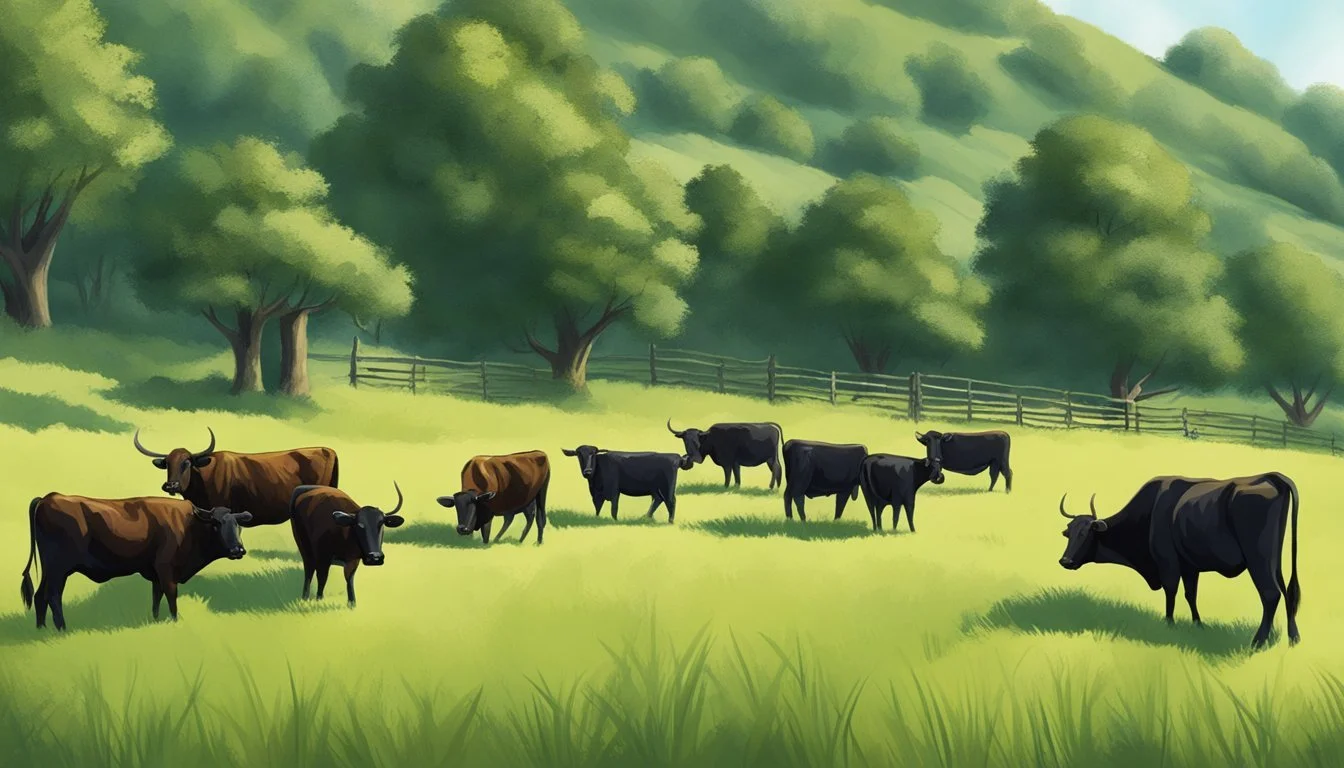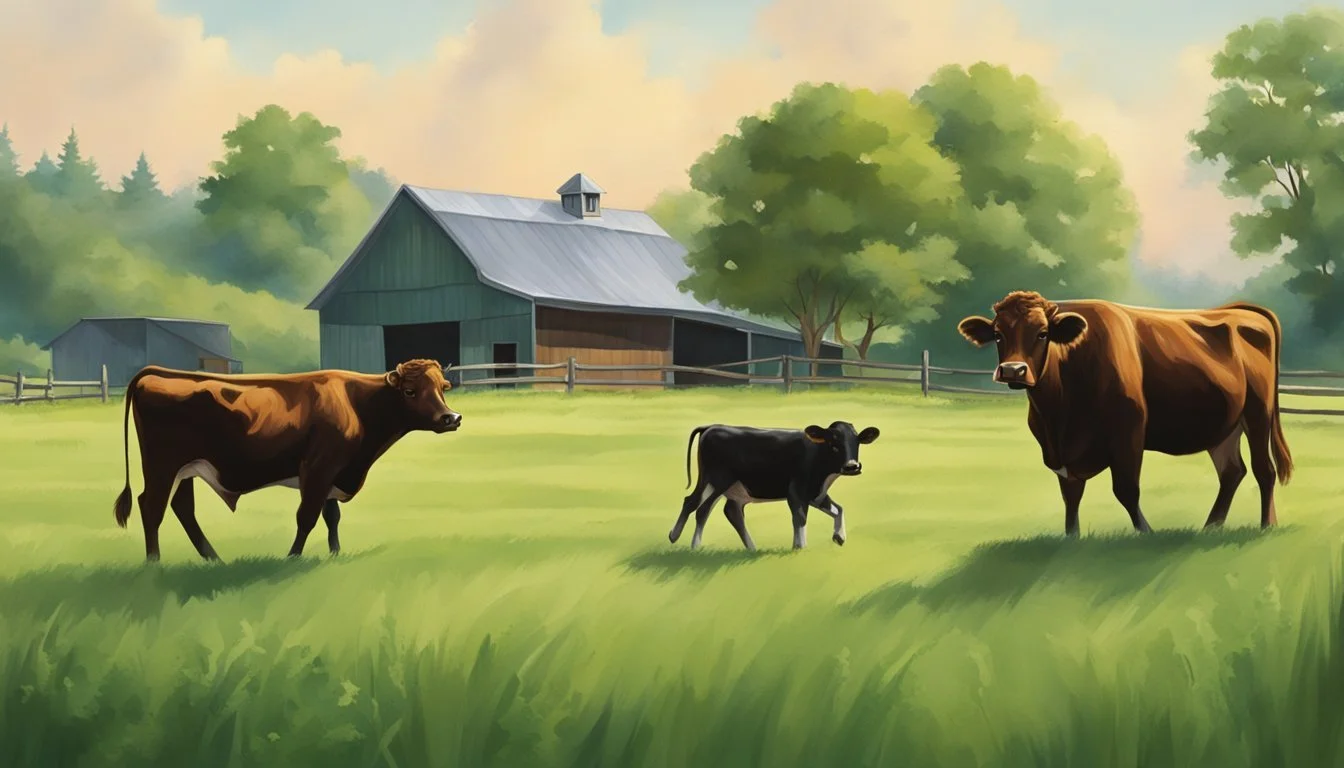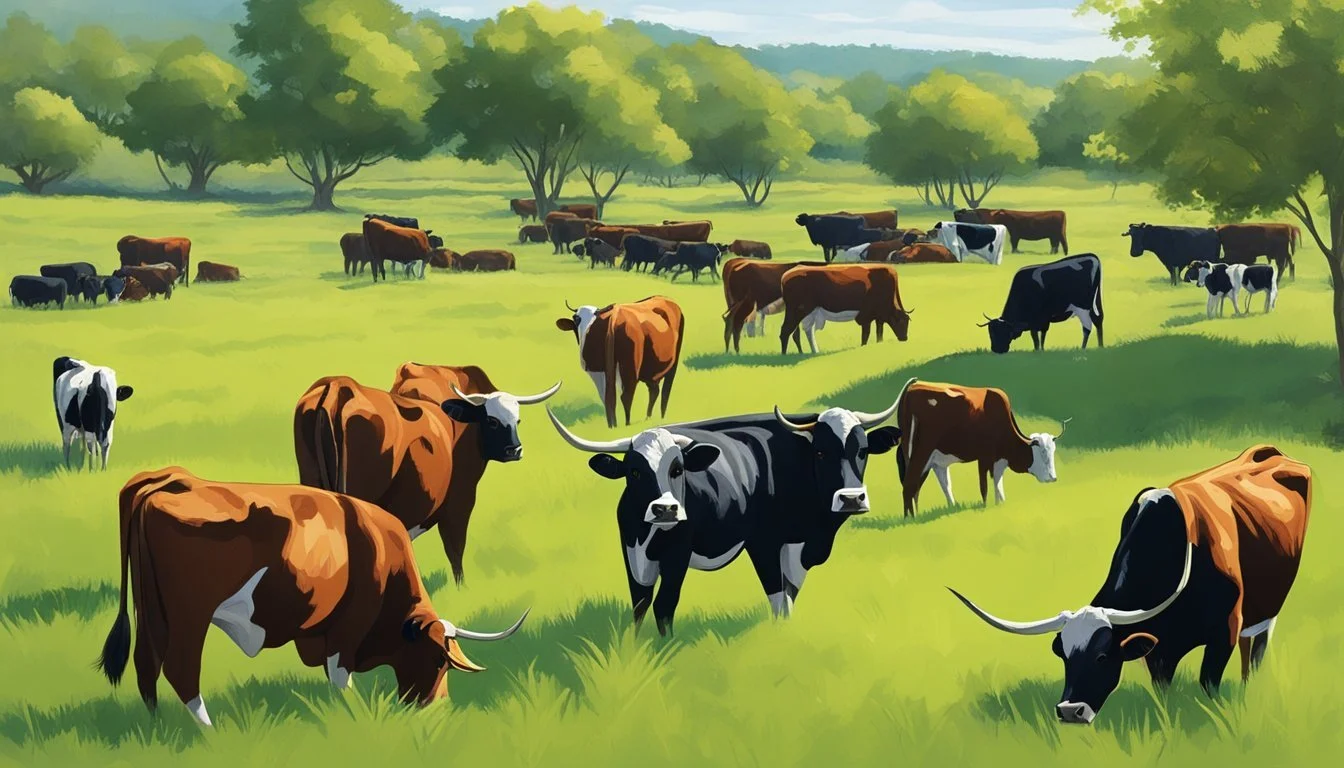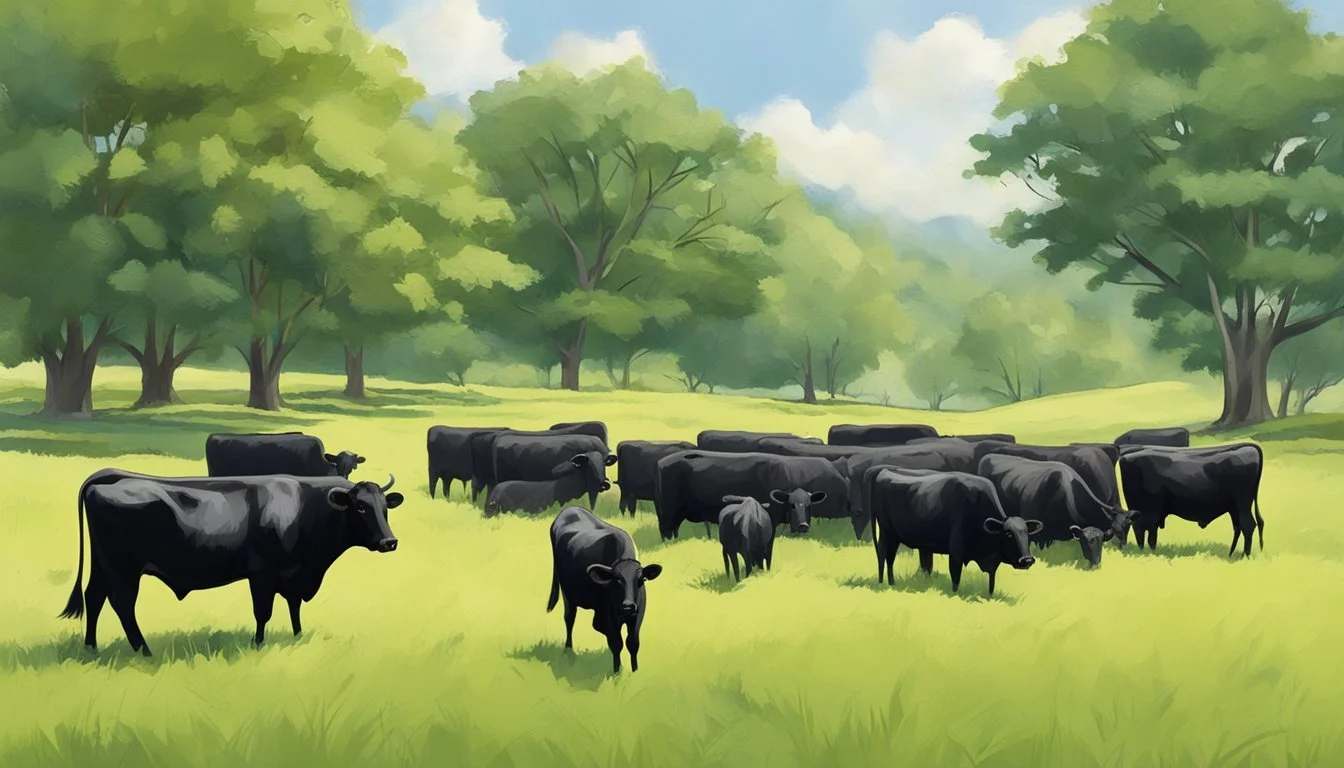Dexter Cattle as Mini Cows
Examining Their Suitability for Preppers
Dexter cattle, a breed known for its petite size, presents an intriguing option for preppers looking for sustainable livestock options. Originating from Ireland, these "mini cows" have gained popularity for their ability to thrive on smaller plots of land, requiring less pasture space compared to standard cattle breeds. With their compact frames, they are one of the smallest cattle breeds, making them comparatively easier to manage, which is a crucial factor for those preparing for self-sufficiency.
Despite their small stature, Dexter cattle are remarkably efficient, producing a high yield of usable meat and being recognized for their dual-purpose utility for both milk and meat production. They are noted for yielding up to 60 percent of their live weight in meat. This efficiency extends beyond meat production, as Dexters are also capable of thriving on less feed, translating into reduced feed costs for the farmer—another important consideration for preppers aiming to optimize their resources.
Considered a versatile breed, Dexter cattle can be an asset for preppers due to their lower maintenance needs and productivity. They can subsist on less forage, and their hardy nature allows them to adapt to diverse climatic conditions, a trait desirable for preppers who may be facing varied environmental challenges. Given their attributes, Dexter cattle may offer a practical and economical solution for those seeking to establish or enhance their livestock within a preparedness strategy.
The History and Origin of Dexter Cattle
The Dexter cattle breed originated in Ireland and is renowned for its diminutive stature and versatility. These cattle are a longstanding testament to Irish agricultural practices and have gained global recognition for their adaptability and conservation value.
From Ireland to Worldwide Recognition
Dexter cattle trace their roots back to the southern regions of Ireland in the 18th century. Historically, they are linked to the Kerry breed but were distinguished by their smaller size. The breed is named after a certain Mr. Dexter who managed Lord Hawarden's estate on Valentia Island and is credited with the breed’s development to create well-suited cattle for small Irish holdings.
By the late 19th century, Dexter cattle made their voyage from Ireland to North America due to their rising popularity, facilitated primarily by Irish immigrants. Their utility and resilience quickly established them as a favorite among small-scale farmers and preppers alike.
In Europe, the breed's official organization, the Dexter Cattle Society, was originally part of the English Kerry and Dexter Cattle Society. By 1924, the focus shifted solely to Dexter cattle, a move that underscored the breed's significance and distinct identity within cattle communities.
It didn’t take long for the breed to encounter its own challenges. By the mid-1970s, Dexter cattle nearly faced extinction in the United States. However, conservation efforts and renewed interest in sustainable and small-scale agriculture secured the breed's comeback and preservation. Today, they stand as a symbol of successful heritage livestock conservation and are featured in the efforts of organizations like The Livestock Conservancy.
Throughout its history, Dexter cattle have evolved from a regional Irish specialty to a conservation success story with a celebrated place in European and American agricultural heritage. Their adaptability and size make them particularly suitable for preppers who seek efficient uses of space and resources.
Understanding Dexter Cattle
Dexter cattle offer small farm owners a versatile breed with manageable size and good temperament. These cattle are a favorable choice for preppers due to their unique characteristics.
Physical Characteristics and Varieties
Dexter cattle are the smallest breed of full-sized cattle. An adult Dexter bull weighs between 1,000 and 1,200 pounds, while a cow weighs between 750 and 850 pounds. They stand about 36 to 44 inches at the shoulder, which is considerably shorter than many other cattle breeds.
Physical traits of Dexter cattle include:
Size: Compact and moderate in stature
Color: Commonly black, but also found in dun (pale brown), red, and occasionally with white markings
Horn Status: Originally horned, with plenty of specimens now being naturally polled (without horns) due to selective breeding
Body: Broad with well-rounded hindquarters, visually reflecting their hardiness
Behavioral Traits and Temperament
Dexter cattle are renowned for their docile and friendly nature. These traits make them particularly suitable for less experienced cattle owners. They are hardy animals that can adapt to various environments, which contributes to their popularity among preppers seeking self-sustaining livestock.
Behavior and temperament can be summarized as follows:
Docility: Generally calm and easy to handle
Temperament: Friendly, they are known to exhibit good-natured personalities
By combining their manageable size with their affable dispositions, Dexter cattle embody a breed well-suited to those seeking reliable and efficient livestock for smaller scale operations.
Advantages of Dexter Cattle for Small-Scale Farming
Dexter cattle offer unique benefits for small-scale farming, providing a viable solution in terms of space efficiency and versatility. This miniature cattle breed, acclaimed by The Livestock Conservancy, is well-adapted to small pastures and offers dual functions as both a beef and milk provider.
Suitability for Small Pastures and Farms
Dexter cattle are a hardy breed, known for being adaptable to a range of climates and environments. With their smaller size, mini cows require less land compared to traditional cattle breeds. They can thrive on as little as half an acre per animal, making them ideal for small pastures and farms where space is at a premium. Their efficiency in space usage does not only benefit small herds but also enables the maintenance of diverse livestock on the farm.
Space Required: Typically less than 1 acre per cow
Pasture Efficiency: High, due to small size and lower food consumption
Dexter Cattle as a Dual-Purpose Breed
As a dual-purpose breed, Dexters are praised for their ability to produce both quality meat and a moderate quantity of milk. Dexter cows can yield around 2-3 gallons of milk daily when grass-fed, which is ample for a family's needs. When it comes to beef production, they are known to have a higher yield of usable meat – often a 55-60% carcass yield on grass-finished steers, which is considerable for their size.
Milk Production: 2-3 gallons/day on a grass-fed diet
Carcass Yield: 55-60% on grass-finished steers
They represent a versatile livestock option for preppers and small-scale farmers who need efficient, smaller-scale livestock without sacrificing productivity.
Dexter Cattle for Preppers and Homesteading
Dexter cattle emerge as an ideal option for homesteaders and preppers due to their compact size and dual-purpose nature, which provides both meat and milk. Their versatility and resilience suit the demands of a self-reliant lifestyle.
Contributions to Self-Sufficiency
Dexter cattle are a boon to a homestead seeking self-sufficiency. They offer several benefits:
Meat Production: With a mature weight typically ranging from 750 to 900 pounds for cows and 900 to 1,000 pounds for bulls, they yield a manageable quantity of meat that requires less processing infrastructure than larger breeds.
Milk Yield: Dexter cows are known for their rich milk, often with a higher butterfat content than other breeds. Despite their size, their milk production is ample for a family's needs.
Pasture Management: Dexter cattle can thrive on grass and forage available on a homestead, with less reliance on commercial feeds. This is a significant advantage for preppers aiming for sustainability.
Ease of Handling and Maintenance
Their diminutive stature, typically 36 to 44 inches at the shoulder, means that Dexters are easier to handle and maintain than their larger counterparts.
Size Advantage: Their small size makes them less intimidating and easier to manage, which is especially beneficial for those new to cattle handling or with limited physical strength.
Feed Efficiency: Dexters consume less feed in proportion to their body weight compared to larger cattle breeds, translating to cost-effective maintenance.
Adaptability: They are a hardy breed with the capacity to adapt to various climates and conditions, an essential trait for preppers who may face unpredictable environmental challenges.
Breeding and Rearing Practices
In the rearing of Dexter cattle, it is essential to understand their breeding cycles and calving characteristics, as well as the optimal practices for raising calves for growth and health.
Breeding Cycles and Calving Ease
Breeding: Dexter cattle are known for their early maturity, with heifers able to breed as early as one year of age. Bulls are typically ready to perform breeding duties by 14 to 18 months. Their breeding cycles follow a seasonal pattern, and they are known for natural breeding without the need for artificial insemination.
Calving: Dexters possess a natural ease of calving, also known as calving ease, due to their smaller size. They have a low incidence of dystocia, which contributes to a lower mortality rate amongst calves and mothers. Monitoring the body condition of pregnant females helps ensure successful calving, aiming for a body condition score of 5 to 7 before calving.
Rearing Dexter Calves for Optimal Growth
Calves are usually nursed by their mothers until they are weaned between six to ten months of age. Weaning before six months can be considered if the calf is growing well and the cow’s health is at risk due to underfeeding or other stresses.
Growth: Post-weaning, it’s important to provide a balanced diet to support the calves’ continued growth. Adequate nutrition — including access to good-quality forage and a mineral supplement — is essential in these months. Dexter calves should have access to shelter and clean water at all times, and growth rates should be regularly monitored to ensure they are on track.
Dexter Cattle as a Source of Meat and Dairy
Dexter cattle serve as both a meat and dairy source, prized for their beef's flavor and tenderness as well as their milk's high butterfat content. These small-breed cows excel in providing comparatively high yield given their size, suitable for both personal consumption and small-scale farming.
Meat Production and Quality
Dexter cattle are recognized for producing high-quality beef. Their meat is known for its tender texture and rich flavor, often attributed to the breed's well-marbled muscle. Despite their smaller stature, Dexters have a good carcass yield, with their live weight translating into a larger percentage of meat than some larger breeds. This is partly due to their heavier muscling. This makes Dexters an efficient option for preppers focused on maximizing resources.
Dairy Production and Butterfat Content
Dairy-wise, Dexter cows are considered moderate producers, capable of yielding about 2 to 3 gallons of milk per day. Their milk has a high butterfat content, ranging from 4% to 5%, which is ideal for creating dairy products like butter and cheese. The milk’s high protein levels also contribute to its quality. Dexter's lactation period can vary, but they generally maintain consistent milk output throughout. High butterfat milk can be a more valuable commodity for preppers, as it yields more dairy products per gallon.
Practical Aspects of Dexter Cattle Farming
Dexter cattle, known for their compact size and efficient meat production, present unique management opportunities for preppers. Their adaptability to different climates and hardiness makes them a robust option for various farming environments.
Feeding and Nutritional Needs
Dexter cattle exhibit a hearty appetite and are not particularly fussy about their diet. Feeding primarily involves:
Hay:
Should be high-quality, particularly during winter when fresh grass isn't available.
Key for maintaining health during scarce months.
Grain:
Not essential but can be used to supplement, especially for grain-fed finishing which can increase carcass yield.
Grain feeding must be managed to prevent health issues.
Pasture Space:
Dexter cattle thrive on pasture, which can include overgrown pastures.
Typically require less acreage than larger breeds — often only half an acre per cow.
Dexter cattle can be raised on a solely grass-fed diet, which is beneficial for those looking to manage feed costs and utilize available land efficiently.
Managing Livestock Health and Welfare
Dexters are a hardy breed, with notable health and longevity. To maintain this:
Monitor for genetic conditions, such as the challenge they face with 'bulldog' calves.
Regular veterinary check-ups and vaccinations are critical.
Establish a parasite management program to ensure ongoing cattle health.
Fencing and Land Management
Effective fencing is crucial to contain Dexter cattle and to manage their grazing patterns:
Fencing should be sturdy and regularly inspected.
Electric fencing can be an effective solution for Dexters due to their smaller size.
Land management ties closely to their welfare:
Rotation of pastures is advisable to prevent overgrazing.
Their smaller stature allows them to graze areas that might be too rough for larger breeds, assisting in keeping overgrown pastures in check.
Through careful management of their diets, health, and grazing land, Dexter cattle can be a viable and efficient option for smaller-scale operations and prepper endeavors.
Economic Considerations for Dexter Cattle Farming
When considering the economics of Dexter cattle farming, two main factors must be analyzed: cost versus profitability and the market for their products. These factors determine how viable Dexter cattle are for preppers who seek to maintain a sustainable and economically sound farming operation.
Cost versus Profitability Analysis
Dexter cattle represent a dual-purpose breed, offering both meat and milk, which can lead to diverse income streams. The initial investment in Dexter cattle is generally lower than that for larger breeds due to their smaller size. For instance, they typically consume less feed, leading to reduced feed costs. However, profitability isn't solely contingent on feed savings. Farmers must evaluate the following:
Purchase price: A Dexter cow's cost varies, but on average, it is between $500 to $2,000 per animal.
Maintenance costs: These include veterinary care, shelter, and feed, which are relatively lower compared to larger cattle breeds.
Meat production: Dexters produce high-quality beef with a good meat-to-bone ratio, leading to a higher yield of saleable product per animal.
Milk production: While Dexter cows produce less milk than larger dairy breeds, the milk is rich in butterfat, potentially commanding a higher market price.
For small farmers considering Dexter cattle, an analysis should be conducted comparing the initial and ongoing costs to the expected return from both the meat and dairy products over time.
Market for Dexter Cattle Products
The market for Dexter cattle products is niche but growing. Meat and milk from Dexter cattle are renowned for their quality, which can provide an advantage:
Meat market: Dexter beef is prized for its excellent marbling and taste, attracting a premium price, especially in local, organic, or specialty markets.
Milk market: Dexter milk, high in butterfat, can be marketed to artisan cheese makers or directly to consumers who seek quality over quantity.
Farmers must consider their local market conditions and potential buyers. Building relationships with local chefs, butchers, and farmer's markets can help to establish a consistent demand for Dexter cattle products. Additionally, online marketing and selling directly to consumers can be advantageous for small-scale farmers who can offer a more personalized connection to the food source. The profitability of Dexter cattle farming hinges on a careful balance between the costs of raising these mini cows, the efficiency of meat and dairy production, and the ability to find and foster a dedicated market.
Current Challenges and Future of Dexter Cattle
Dexter cattle face several challenges, including genetic health issues and the necessity for conservation efforts. Their smaller stature brings unique advantages and responsibilities in the farming community. The sustained growth and preservation of the breed rely on targeted actions in conservation and innovative practices in their farming.
Conservation and Biodiversity Efforts
Conservation: The Dexter breed, being one of the smallest European cattle breeds, has garnered attention for its role in conservation and rewilding projects. Due to their hardiness, Dexters are instrumental in maintaining various ecosystems. They help in managing landscapes, which fosters biodiversity by creating habitats for other wildlife.
Biodiversity: Efforts to increase their numbers have seen success in North America, attributed to targeted conservation efforts and coordinated breeding programs. This has helped the breed bounce back from previously low population levels. However, genetic diversity must be carefully managed to prevent inbreeding and maintain a healthy, resilient population.
Innovations and Trends in Dexter Cattle Farming
Innovations: In breeding practices, attention has been given to mitigate genetic reproduction issues, such as the occurrence of 'bulldog' calves, which are stillborn with deformities. Breeding programs focus on promoting genetic health to ensure the survivability of the breed.
Trends: On small-scale farms and among preppers, Dexters are gaining popularity due to their manageable size, efficient milk production, and adaptability. They are fitting for small homesteads as they require less land and produce ample milk and meat relative to their size, making them an ideal multi-purpose breed. This trend toward sustainable and self-sufficient farming practices bodes well for the future of Dexters.








